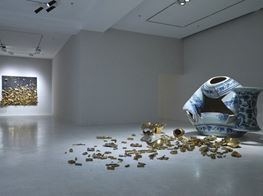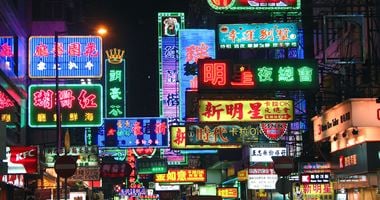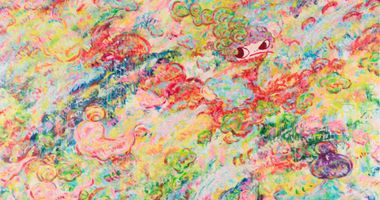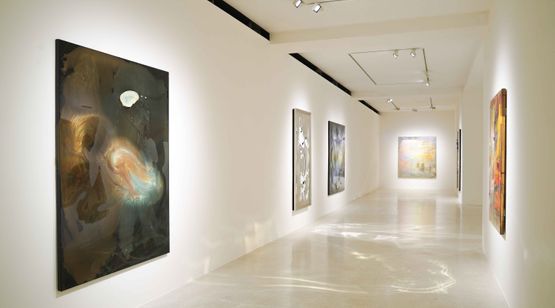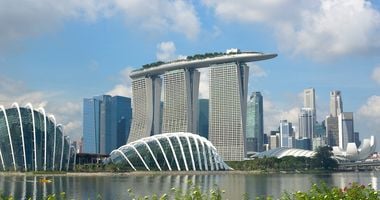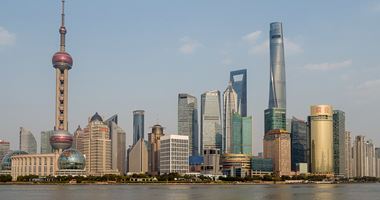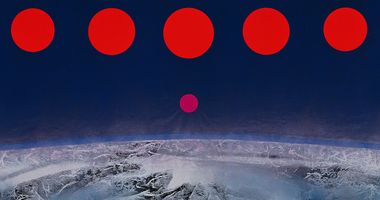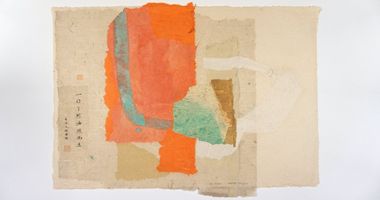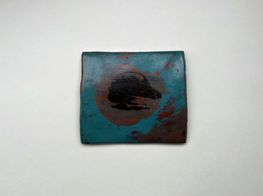Pearl Lam in Conversation
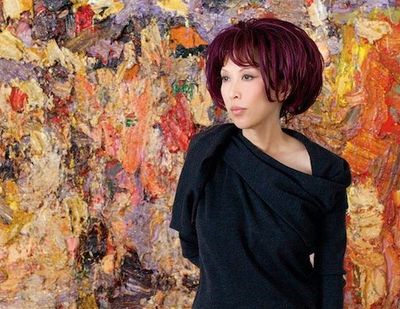
Pearl Lam started exhibiting and promoting Chinese contemporary art in 1993 when she opened Contrasts, her first gallery in China. Today her eponymous gallery, Pearl Lam Galleries, has spaces in Shanghai, Hong Kong and at Gillman Barracks in Singapore.
Over the past two decades, Pearl Lam and her galleries have consistently championed the promotion and re-consideration of the philosophy, perceptions and aesthetics of Chinese art, while still acknowledging the importance of a continuing dialogue with a wider global community.
The gallery represents Chinese artists such as Su Xiaobai, Zheng Chongbin, and Zhu Jinshi - who reinterpret traditions, fuse cross-cultural influences and examine China today. In tandem with this, the gallery also presents major solo exhibitions by artists such as Jenny Holzer, Yinka Shonibare and Jim Lambie, stimulating a two-sided cultural exchange between China and the rest of the world.
During Art Basel in Hong Kong, Pearl Lam's space at Pedder Street will present a solo show of lacquer works by Chinese artist, Su Xiaobai curated by Paul Moorhouse.
As a gallery we are trying to show that there are many different roots to abstract art.
ADCan you please tell me about the exhibition you will have in your Pedder Street space during Art Basel Hong Kong.
PLWe will be showing Su Xiaobai.
Su Xiaobai is a Chinese abstract artist who uses lacquer as a medium. He also represents a strand of Chinese artists who are well known within the Chinese and Taiwan art world - he had his last show at the National Museum of Taiwan — but he is relatively unknown internationally. So showcasing his work during Art Basel, is a good opportunity to share his work with an international audience.
ADYou always take an approach of re-designing the gallery space to best suit the exhibition. Will you be doing this for the Su Xiaobai exhibition?
PLWe will be completely repainting the entire gallery for this exhibition — all in grey, and we are publishing a 340-page book for this exhibition.
ADThe gallery is a very strong proponent of Chinese contemporary abstract art?
PLYes, we are. This began when one of the leading curators in China, Wang Chunchen, came to talk to me about six or seven years ago about my art foundation — which is focused on cultural dialogue. He said to me that if I really believed in Chinese art, that I should focus on Chinese abstract.
There is a lot of misunderstanding about Chinese abstract art. In the past, Western academics and curators have viewed abstract Chinese art as very derivative. But we started pouring ink in 1780 during the Ming Dynasty. Wang Chunchen said he didn't have the energy so I had to fight for the cause. Since I am so hyperactive and always like challenges he said: 'You should fight for Chinese abstract because you love it.'
ADYour inaugural exhibition at Hong Kong also focused on abstract art, this time on Chinese Contemporary Abstract work from the 1980s. The catalogue to that exhibition included a dialogue between Gao Minglu and Paul Moorhouse that centered on the relationship between abstract painting in the West and the East.
How would you define the relationship between the West and East in respect of the Chinese abstract artists you have shown?
PLAs a gallery we are trying to show that there are many different roots to abstract art. There isn't just Kandinsky and there isn't just American or European abstract expressionism. Abstract art also has roots in China, and these are very interesting. For example, in the West there are discussions of abstraction being linked to the meditative process.
This is what Chinese abstract art has always been about, as it evolved from the Chinese ink brush culture and is linked to Daoism and Buddhism. Actually Chinese abstract is both expressionist and actually very conceptual too - because of these links with philosophy. And if you look at a lot of Western abstract artists now — whether Mark Bradford or Sterling Ruby they are also exploring conceptualism and abstraction. Well we have being doing that for over a thousand years!
So it is interesting to see this group of artists from the 1960s that were exposed to the West. They went and lived in the West, and then they were all learning Chinese calligraphy and Chinese sculpture, and they took what they learned in the West and in China and integrated both together.
ADHow does an artist like Su Xiaobai relate to this West/ East discourse?
PLSu Xiaobai is very interesting. If you are using a Western eye, Western theory or Western hierarchy of fine art, then you have fine art up here, design down here, and lower down the decorative arts.
Su Xiaobai uses lacquer, and taking a Western perspective this is decorative — too artisan. But when you look at Su Xiaobai's work and how he approaches his work, it isn't decorative or derivative of Western art at all. Before he applies the lacquer, his mind is blank. It is a very meditative approach and process, and he is always fighting for control over the final piece. If you are painting, you are always thinking about and understanding what the effect is of the final stroke on the canvas.
With lacquer — he applies 15 layers of different colours — every time a layer is applied he takes a gamble because he never knows what the result will be, and so there is this constant fighting with the materials — his work reflects his fight to control the result of what is left behind. He is always talking about the heart — he says: "the heart is everything, everything is heart. Everything is everything, everything is nothing."
ADThe work is also very sculptural, very minimalist looking?
PLYes, but if you go in close to it, you will see the different layers. You cannot use a Western minimalism approach to his work. While we might draw on Western theory and Western aesthetic, these works are most interesting for an integration of Chinese culture that reflects an international visual language.
My gallery is all about talking about cultural dialogue. I want to share the existence of other roots of abstract painting, roots not just grounded in the West.
ADIn an earlier interview, I believe you said that all Chinese art is about re-thinking tradition?
PLNo — what I said is this: "There are many trends of Chinese art. My favorite of Chinese contemporary art is an artist that reinvents tradition by merging or integrating the Western language and in doing so reflects a new expression". I am interested in artists that don't just adapt or adopt a Western concept and overlay a local language. I am more interested in artists - remembering that I view art as a communication — that are saying something, who are talking and teaching me something. What I always say is that I like art that has an international language, but that has a vocabulary that is Chinese.
ADThe exhibition you opened your Singapore space with juxtaposed Western abstract artists with Chinese abstract artists - so were you looking for ways to make that dialogue more apparent?
PLYes, that was an exhibition we discussed with Philip Dodd. It is very weird for a gallery to open with a group show. Galleries always open with one-man artist shows. I want to say this: I am not a Western gallery. I am trying to find what is a 'Chinese gallery'.
Of course we have to draw from the West — because, until recently, there has been little or no gallery or museum structure in Asia. But I don't think I should follow exactly the Western model. My gallery is all about talking about cultural dialogue. I want to share the existence of other roots of abstract painting, roots not just grounded in the West. So I opened in Hong Kong with Chinese abstract and with Singapore we showed artists from Indonesia, China and also western artists and we showed them together — we showed the varying roots.
Art is not a commodity, and it is very difficult for it to be a commodity.
ADYou said, in an earlier interview, that you were not proud to be Chinese and you learnt to be proud via art and design. What did you mean by this comment?
PLI was so arrogant. I was so pitiful. I was so arrogant. I went to China in 1993. I am not Chinese. I am Hong Kongese. I went to China with no understanding of China. In the West everyone was talking about multidiscipline/ cross discipline and that everything had to be treated equally across the disciplines, but at the same time there was this view that Chinese art was all about the aesthetic, and that there was no conceptual thought and it was a lesser form of art. Blah blah blah.
The thing is, when I went to China, I couldn't speak Mandarin. I grew up in an environment with my mother. My mother is from Shanghai, so she speaks to her friends in Mandarin or Cantonese, but I always replied in Cantonese. So I could understand Mandarin, but I couldn't speak it. I was dumb.
These Chinese artists were taking me around, but I couldn't speak to them. If I had questions, I had to write them — It was terrible. I love speaking! I was being forced to listen, and that environment made me learn. Chinese culture suddenly was pretty cool, and I decided I better become Chinese — as any practical Hong Kong person would do.
ADWhat are your expectations of Basel?
PLIn the long run, and what I hope for, is that Art Basel can bring more international collectors and international galleries to Hong Kong. And why — well because the majority of the Asia collectors are here for investment. They buy, and then they put work in auction.
In order to really and truly have a vibrant art scene and have a great platform for artists, we have to stop this approach. Art is not a commodity, and it is very difficult for it to be a commodity. I think we need international collectors to set a high bar. Foreign galleries coming here is good because they too help us to raise our standards.
It is also interesting though - Western collectors and gallerists need to understand that artists who are very well known and popular in the West — well they may not be popular here. The Western idea of Conceptual art is not popular here, but it still needs to play a greater role in Asian art. We have our own conceptualism, which is very different and which springs from Chinese ink painting. But we need to integrate and appreciate both approaches.
ADIs this why you have chosen to show international artists, for example such as Jenny Holzer?
PLYes, but these artists were invited to come here and make work specifically for the gallery and to conceptualise it. Like Jenny, for example — all her artworks she did for her show are in Chinese. We used two professors and she used several professors to translate her Truisms and Survival Series in to Chinese. You need to have that dialogue. It wasn't just about text. As I explained to Jenny — text art has been in China for over a thousand years.
We made character paintings, but we didn't have people called artists etc - we had people called Chinese literati. Chinese literati were like todays conceptual artists. Each of the paintings they made are not about the physical process of painting. Aesthetic was part of it, but mostly Chinese literati created Chinese proverbs, and they painted, were poets and wrote literature. It was all about creating intellectual paintings. But because of the last one hundred years of Chinese history, and because the Imperial examination was abolished and China was under foreign aggression — the premise behind what the literati were doing was abolished and Chinese artists started to follow the West, and in particular 19th Century art Western art.
In China, we are now coming back to this tradition of intellectual painting, to the tradition of the literati. We are reinventing the past. We were doing it a hundred years ago. With Jenny — what she was doing was very relevant to what the literati were doing, but she uses a different medium — LED. It was a show where we were trying to link the past, the present, the West and the East — putting it all together. And it was a very interesting thing.
ADWhat are you looking forward to at Art Basel in Hong Kong?
PLAside from our booth at Art Basel, I look forward to seeing Su Xiaobai's installation in the Peninsula lobby. When you walk into the lobby, there will be a big installation with 1,500 tiles. I also look forward to seeing Morgan Wong's work in the Encounters Sector. But all I care about right now is getting it all done in time! —[O]

